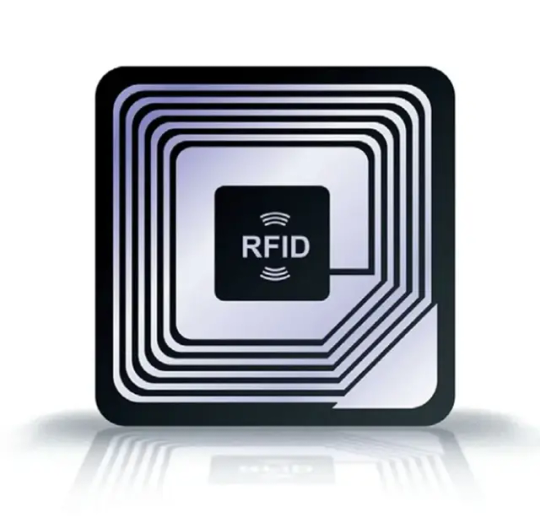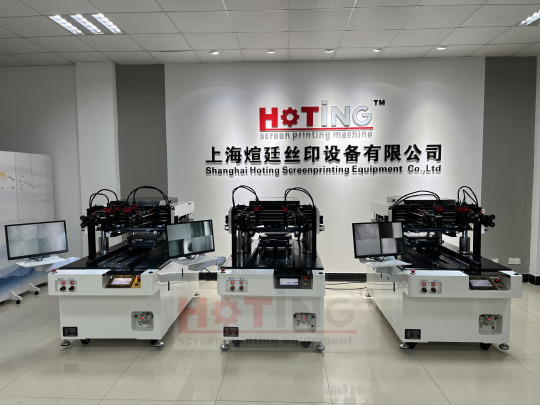#PrintedElectronics
Explore tagged Tumblr posts
Text
Chip-less RFID Market Future Trends Driving Next-Gen Contactless Tracking and Smart Inventory Systems
As global industries move toward digital transformation and automation, the chip-less RFID market is gaining unprecedented attention. Unlike traditional RFID systems, chip-less RFID operates without silicon chips, making it more cost-effective, flexible, and suitable for mass applications. With a focus on sustainability, efficiency, and intelligent data capture, the market is projected to undergo dynamic shifts in the coming years. These future trends are shaping how businesses, governments, and logistics sectors handle tracking, authentication, and inventory management.

Rise in Cost-Effective and Eco-Friendly Solutions
One of the most significant future trends driving the chip-less RFID market is the increasing demand for low-cost identification solutions. Traditional RFID systems come with silicon chips, which make them more expensive and harder to recycle. In contrast, chip-less systems use printable electronics and conductive materials, making them a greener and more economical option. As environmental regulations become stricter, industries are actively seeking alternatives that reduce e-waste and lower carbon footprints, leading to accelerated adoption of chip-less RFID technologies.
Integration with Smart Supply Chain Ecosystems
The convergence of chip-less RFID with smart logistics and supply chain management is set to become a game-changer. Future trends indicate that these systems will play a pivotal role in enhancing transparency, reducing errors, and speeding up inventory processes. By enabling real-time tracking without the need for batteries or complex infrastructure, chip-less RFID tags offer unmatched scalability for warehouse operations, retail chains, and shipping networks. This integration will be particularly beneficial for businesses looking to implement Industry 4.0 and IoT-enabled supply chain strategies.
Advancements in Printed and Flexible Electronics
Technological innovation in printed electronics is one of the key enablers behind the growth of chip-less RFID. Future trends point toward the expansion of ink-based RFID tags that can be printed on paper, plastic, fabric, or even directly on products. This breakthrough opens new possibilities for applications in textiles, packaging, and healthcare. The growing availability of printable conductive inks and materials is also expected to drive mass production, enabling manufacturers to produce tags at scale and embed them seamlessly into various surfaces.
Increased Adoption Across Healthcare and Pharmaceuticals
The healthcare sector is rapidly emerging as a key adopter of chip-less RFID technology. Hospitals, clinics, and pharmaceutical companies are exploring its use in tracking medical supplies, patient identification, and medication monitoring. Unlike barcodes, chip-less RFID tags can be read without direct line-of-sight, offering faster and more accurate data capture. In the future, we can expect widespread use of chip-less systems for sterile environments, vaccine tracking, and ensuring authenticity in drug distribution chains.
Enhanced Security and Anti-Counterfeiting Measures
Another future trend gaining traction is the use of chip-less RFID for anti-counterfeiting and brand protection. High-end consumer goods, electronics, and luxury products are increasingly vulnerable to counterfeit threats. Chip-less RFID technology, when combined with cryptographic features and unique identification patterns, can offer a secure and tamper-proof solution. As technology advances, the ability to integrate invisible RFID tags into product packaging will become a powerful deterrent against counterfeiting, giving manufacturers and consumers greater confidence in product authenticity.
Government and Transportation Sector Deployment
Governments and public infrastructure agencies are beginning to recognize the potential of chip-less RFID in areas such as toll collection, vehicle identification, public transportation, and border security. With its non-intrusive design and passive nature, the technology is ideal for large-scale identification systems. Future trends indicate expanded use in national ID systems, e-passports, and smart city initiatives. This transition will be supported by improved reader infrastructure and wider standardization, making chip-less RFID a preferred choice for public sector deployments.
Shift Toward Consumer-Driven Applications
As the technology matures, chip-less RFID will move beyond industrial and enterprise-level usage toward more consumer-focused applications. From smart packaging in supermarkets to contactless ticketing at events, the possibilities are endless. The retail sector, in particular, stands to benefit from innovations that allow for instant checkout, interactive product experiences, and precise inventory tracking. With smartphones and connected devices becoming more prevalent, future chip-less RFID systems will likely be compatible with mobile readers, driving broader accessibility and convenience for end users.
Final Thoughts
The future of the chip-less RFID market is brimming with potential as the world demands faster, smarter, and more sustainable identification solutions. With ongoing innovation in materials, manufacturing, and integration techniques, chip-less RFID is expected to become a cornerstone of next-generation data collection systems. Its ability to seamlessly blend with smart environments, improve operational efficiency, and reduce costs makes it a vital technology for businesses aiming to thrive in the digital economy. As adoption accelerates, industries that embrace these future trends will be better positioned to capitalize on the shift toward contactless, intelligent ecosystems.
0 notes
Text
#ConductiveInks#ConductivePastes#ElectronicsPrinting#PrintedElectronics#InkjetPrinting#FlexibleElectronics#ConductiveMaterials#MarketResearch#TechInnovation#FutureTech
0 notes
Text
Organic Electronics Research
Organic Electronics Research refers to the scientific study and development of electronic devices and systems using organic (carbon-based) materials as the active components. Unlike traditional silicon-based electronics, which rely on inorganic semiconductors like silicon and gallium arsenide, organic electronics utilize organic molecules or polymers with semiconducting properties.
Nomination Link :https://x-i.me/emcnom Get Connected Here: ================== Facebook : https://www.facebook.com/profile.php?id=61556074815651 Twitter : https://twitter.com/PencisE28647 Pinterest : https://in.pinterest.com/electronicconference/
#OrganicElectronicsResearch#OrganicElectronics#OrganicSemiconductors#OLEDResearch#OPVResearch#OTFTResearch#FlexibleElectronics#PrintedElectronics#OrganicMaterials#ConductivePolymers
0 notes
Text
Transparent Semiconductors: A $9.8B Industry on the Rise – Are They the Next Big Thing?
Advanced Transparent Semiconductors Market is set for remarkable expansion, growing from $4.2 billion in 2024 to $9.8 billion by 2034, at a CAGR of 8.8%. These cutting-edge materials, known for their high transparency and conductivity, are transforming optoelectronics, display technologies, and solar cells — paving the way for next-gen flexible electronics and sustainable solutions.
To Request Sample Report: https://www.globalinsightservices.com/request-sample/?id=GIS10024 &utm_source=SnehaPatil&utm_medium=Article
🔬 Market Growth & Key Trends:
✅ Rise of Flexible Electronics — Enabling bendable, ultra-thin screens ✅ High-Performance Displays — Powering OLEDs, MicroLEDs & AR/VR devices ✅ Energy-Efficient Semiconductors — Driving sustainable smart tech ✅ Expanding Renewable Energy Applications — Boosting photovoltaic cell demand ✅ Transparent Conductive Materials — Enhancing touchscreens & smart windows
📊 Leading Market Segments:
🔹 Thin-Film Transistors (45%) — Essential for high-performance electronic displays 🔹 Transparent Conductive Oxides (30%) — Revolutionizing touch panels & solar tech 🔹 OLEDs (25%) — Advancing flexible displays & energy-efficient lighting
🌍 Regional Market Insights:
🌟 Asia-Pacific — Leading innovation in China & South Korea 🌟 North America — Strong R&D & high-tech adoption 🌟 Europe — Investing heavily in energy-efficient display technologies
Key players, including Samsung, LG, and Sharp, are spearheading innovation, driving the future of transparent semiconductors and next-gen electronics! ⚡
#TransparentSemiconductors #AdvancedElectronics #TechInnovation #NextGenDisplays #FlexibleTech #Optoelectronics #OLEDTechnology #MicroLED #ThinFilmTransistors #SmartDisplays #WearableTech #FutureOfDisplays #EnergyEfficientTech #ARVRDisplays #ConsumerElectronics #TechBreakthrough #SiliconRevolution #TransparentTech #HighTechMaterials #SolarCells #Photovoltaics #SmartWindows #SustainableInnovation #SemiconductorIndustry #NanoTech #PrintedElectronics #FlexibleScreens #FutureOfTech #RenewableEnergy #ElectronicRevolution #InnovationInTech #TransparentDevices #DisplayTechnology #ElectronicsRevolution #TechTrend #QuantumLeap
0 notes
Text
PhD in Printable Self-Powered Gas Sensors for Sustainability Simon Fraser University #PhD Opportunity in #Printable #SelfPowered #GasSensors for #Sustainability-Driven Applications! Join the Sustainable Optoelectronics Group @SFU See the full job description on jobRxiv: https://jobrxiv.org/job/simon-fraser-university-27778-phd-in-printable-self-powered-gas-sensors-for-sustainability/?feed_id=58353 #ScienceJobs #hiring #research #PhDStudentship #GasSensors #Sustainability #PrintedElectronics #OrganicSemiconductors #2DSemiconductors #Sensors #SelfPowered #OrganicElectronics #CarbonNanotubes #TFTs #Transistors #Graphene #EnergyHarvesting Metro Vancouver #Canada #PhDStudent
0 notes
Text
What are the applications of Printed Electronics?

Printed electronics is a broad term for the printing method used to create electronic devices by printing on a variety of substrates. Printed electronics were originally associated with organic or plastic electronics that use one or more carbon-based inks. Printed electronics are being used to create flexible keyboards, antennas, electronic skin patches, and other products as the demand for wearable devices and thinner electronics grows. With the advancement of printed electronics technology, inkjet printers can now print electrical circuits cheaply and quickly.
Two of the most common printed electronics applications are medical sensors and diagnostic devices. The increasing use of printed batteries in various medical devices is one of the market's driving forces. The adoption of stretchable, rechargeable, and flexible printed batteries is another major ongoing trend in the printed electronics market. The growing application of printing technologies in memory, logic energy storage devices, mobile chips, and printed circuit boards is expected to be a major driver for the market during the forecast period.
Read more @ https://cmiinfoistic.blogspot.com/2022/04/printed-electronics-is-new-method-of.html
#coherentmarketinsights#coherentmarketinsightsreports#PrintedElectronicsMarket#Semicondutors#PrintedElectronics
0 notes
Photo

Congratulations to Angela Harper (‘17), who received the LeRoy Apker Award from the American Physical Society for outstanding achievement in #physics. She was a #goldwaterscholar @wfuniversity and also won a @nsfgov graduate research fellowship. Harper, who is a graduate student @cambridgeuniversity, was honored for her contributions to printed electronics and her leadership in the Society of Physics Students and Society of Women in #STEM fields. #GoDeacs #wfu #wakeforestuniversity #wakeforest #academicexcellence #science #printedelectronics (at Wake Forest University)
#godeacs#academicexcellence#wfu#printedelectronics#wakeforestuniversity#physics#stem#wakeforest#goldwaterscholar#science
0 notes
Text



Thick film screen printer, widely used in ceramic capacitors, resistors, thick film circuits, ceramic circuits, filters, glazed potentiometers, dielectric antennas, ceramic metallization, RFID, automotive oil level sensors, tension sensors, air quality sensors, pressure sensors (piezoresistive, capacitive) integrated LED lamp holders, piezoelectric ceramic components, LED ceramic substrates, LTCC, MLCC, filters, ceramic thickness, membrane circuit, solar wafer, chip element and electronic components printing process manufacturing. #printing #printedelectronics #thickfilm #thickcircuit #ceramiccircuit #ceramics #electronics #electroniccomponents #capacitors #resistors #sensors #circuits #filters
Any more technical or price query please feel free to contact:
Shanghai Hoting screen printing equipment Co.,Ltd
ADD: BLDG 13, No. 99, Liuye Road, Songjiang District, Shanghai, China
Zip Code: 201611
Tel: +86-21-34121831
Fax: +86-21-34121832
Sales Manager: Andrew Zhao
Mobile: +86 18001630038 (Whatsapp, Wechat (Hotingscreenprinting), Viber)
QQ: 894927833
Skype: hotingscreenprinting03
Email: [email protected] / [email protected]
0 notes
Text
RT Parcinc Our own Sean Doris is exploring novel approaches in #PrintedElectronics to enhance the performance of batteries. Read more: https://t.co/kGJI4a71pa https://t.co/JHXebI1ijR #Emp, Brian Ruiz, TheBrianRuiz #Xerox #Print #Printing #InkJet #Printer #DigitalPrinting #bria…
RT Parcinc Our own Sean Doris is exploring novel approaches in #PrintedElectronics to enhance the performance of batteries. Read more: https://t.co/kGJI4a71pa pic.twitter.com/JHXebI1ijR #Emp, Brian Ruiz, TheBrianRuiz #Xerox #Print #Printing #InkJet #Printer #DigitalPrinting #bria…
— Brian Ruiz (@TheBrianRuiz) December 12, 2019
via Twitter https://twitter.com/TheBrianRuiz December 12, 2019 at 08:23AM
0 notes
Text
"Ink Innovation: Conductive Inks Market Trends (2024-2033)"
The conductive inks market is poised for dynamic growth from 2024 to 2033, driven by the increasing demand for printed electronics in various applications including smart packaging, wearable devices, and flexible displays.
Market research indicates a surge in adoption of conductive inks due to their versatility, enabling the printing of conductive traces and circuits on a wide range of substrates including paper, plastic, and textiles. With advancements in ink formulations and printing technologies, manufacturers are able to produce conductive inks with enhanced conductivity, durability, and flexibility, meeting the evolving needs of electronic device manufacturers. Furthermore, the proliferation of Internet of Things (IoT) devices and the demand for interconnected smart systems are driving the integration of conductive inks in sensors, antennas, and RFID tags, driving market growth. As industries seek lightweight, cost-effective, and environmentally friendly solutions, conductive inks are expected to play a pivotal role in shaping the future of electronics manufacturing. This decade will witness continued innovation and investment in conductive ink technologies, paving the way for the development of advanced printed electronic devices. #ConductiveInks #PrintedElectronics #SmartPackaging #WearableTech #FlexibleDisplays #IoTDevices #Innovation #ElectronicsManufacturing #MarketTrends #RFIDTags #Sensors #SmartSystems #EnvironmentalFriendly #MarketForecast #ElectronicDevices
0 notes
Text
PhD in Printable Self-Powered Gas Sensors for Sustainability Simon Fraser University #PhD Opportunity in #Printable #SelfPowered #GasSensors for #Sustainability-Driven Applications! Join the Sustainable Optoelectronics Group @SFU See the full job description on jobRxiv: https://jobrxiv.org/job/simon-fraser-university-27778-phd-in-printable-self-powered-gas-sensors-for-sustainability/?feed_id=54191 #ScienceJobs #hiring #research #PhDStudentship #GasSensors #Sustainability #PrintedElectronics #OrganicSemiconductors #2DSemiconductors #Sensors #SelfPowered #OrganicElectronics #CarbonNanotubes #TFTs #Transistors #Graphene #EnergyHarvesting Metro Vancouver #Canada #PhDStudent
0 notes
Text
Printed Electronics Market Global Trends, Market Share, Company Size, Growth, Opportunities and Market Forecast 2025

Printed electronics is a collection of printing techniques for making electrical devices on a variety of substrates. Active or passive devices, such as thin film transistors, capacitors, coils, and resistors, are created by depositing electrically functioning electronic or optical inks on the substrate.
The increased use of printed electronics in the development of smart and connected devices is likely to drive the growth of the Printed Electronic Market during the forecast period. Furthermore, the growing global need for energy-efficient, thin, and flexible consumer electronics is expected to boost the printed electronics industry forward. Furthermore, the significant cost advantages supplied by printed electronics are expected to cushion the printed electronics market's expansion. On the other hand, the experience gap between the numerous disciplines involved in the development of printed electronics is expected to stymie the market's expansion over the forecast period.
Furthermore, the introduction of new applications and functions of printed electronics, as well as their integration with a variety of goods, will give further prospects for the printed electronics market to grow in the future years. The introduction of new and cost-effective inks, on the other hand, may pose a fresh obstacle to the printed electronics market's growth in the near future.
Read more @ https://cmiaspireblog.blogspot.com/2022/01/printed-electronics-market-share.html
Source Link: https://www.coherentmarketinsights.com/infographics/printed-electronics-market/186
#coherentmarketinsights#coherentmarketinsightsreports#Printedelectronics#Printed#electronics#Semiconductors#electricaldevices
0 notes
Text
RT IBMIoT "RT OEAonline: #OEAmembers visit IBMIoT during #OEAmeeting: Interesting introduction, of course involving #IoT. #PrintedElectronics play a key role here. https://t.co/dOMvON9MVZ"
RT IBMIoT "RT OEAonline: #OEAmembers visit IBMIoT during #OEAmeeting: Interesting introduction, of course involving #IoT. #PrintedElectronics play a key role here. pic.twitter.com/dOMvON9MVZ"
— Ross Radev (@Ross_Radev) March 18, 2019
from Twitter https://twitter.com/Ross_Radev
0 notes
Text
Thick film screen printer for printed electronics products like EMI/RFI Shielding, Solar cells, Organic photovoltaics, RFID, Flexible sensors, Conductive tracks, Insulating layers, Anti-counterfeiting, Touch sensors, OLED lights, Smart Lables, Electrical and household "white goods" displays etc. Have thought of view this kind of printer is something like vertical 600*800mm printer or clam shell printer, but if you need printing tolerance/accuracy on ±5um, the printer need to be special made and after billions millions test print, research and develop. #printedcircuitboard #printedelectronics
0 notes
Text
RT Parcinc We're excited to be showcasing our Cleanroom services and latest advances in #PrintedElectronics at the IDTechExShow. Stop by the Santa Clara Convention Center (Booth X22) and say hello to our team! https://t.co/dseB0uAFj6 https://t.co/SK8lk8dEYc #Emp, Brian Ruiz, T…
RT Parcinc We're excited to be showcasing our Cleanroom services and latest advances in #PrintedElectronics at the IDTechExShow. Stop by the Santa Clara Convention Center (Booth X22) and say hello to our team! https://t.co/dseB0uAFj6 pic.twitter.com/SK8lk8dEYc #Emp, Brian Ruiz, T…
— Brian Ruiz (@TheBrianRuiz) November 21, 2019
via Twitter https://twitter.com/TheBrianRuiz November 21, 2019 at 10:50AM
0 notes
Text
3D Printing Electronics
3D printing electronics is an innovative approach that combines traditional 3D printing techniques with electronics assembly processes. It allows for the creation of complex three-dimensional objects with embedded electronic components. Here's how it generally works:
#3DElectronics #PrintedElectronics #AdditiveElectronics #3DPrintedCircuits #ElectronicsPrinting #ConductiveFilament #EmbeddedElectronics #PrintedSensors #3DPrintedComponents #ElectronicsPrototyping More information: electronicmaterialsconference.com
For Enquiry: [email protected]
0 notes